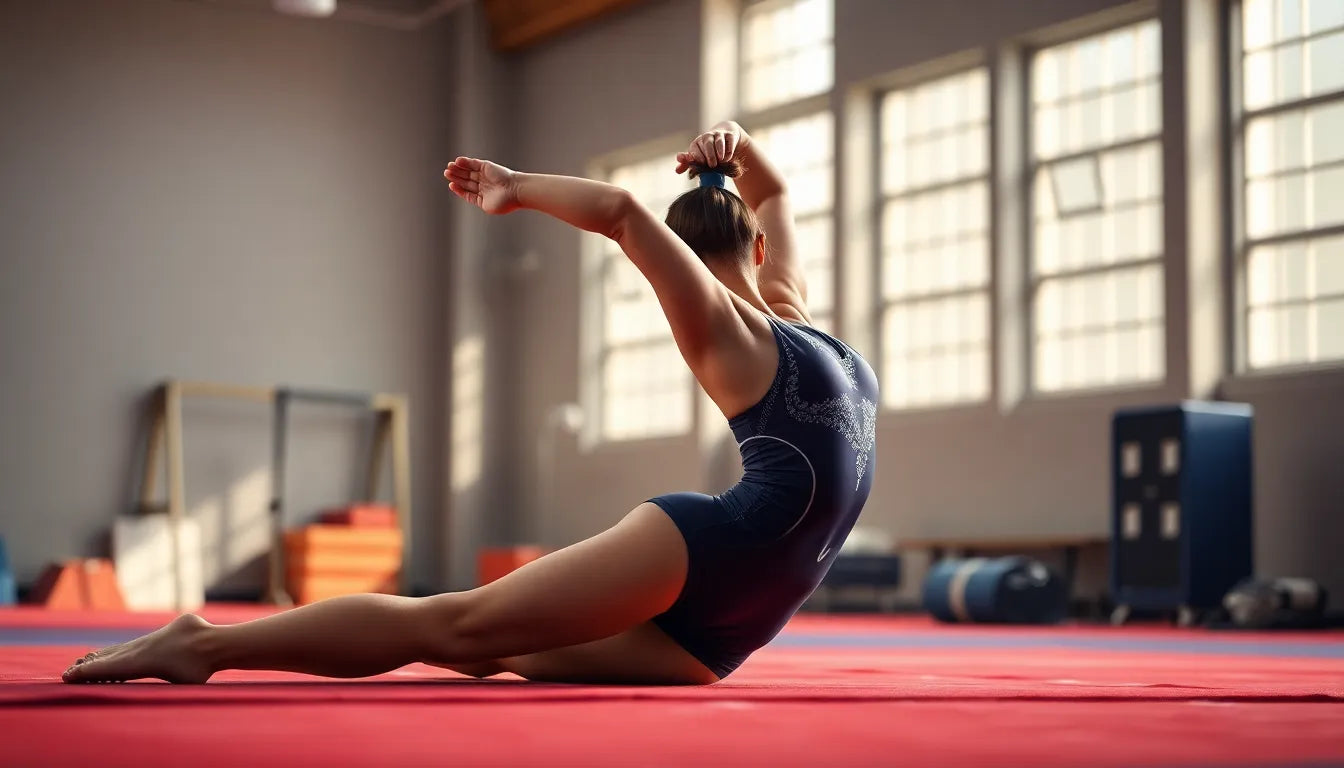Incorporating gode udstrækningsøvelser, or good stretching exercises, into your daily routine can significantly enhance your overall health and well-being. Stretching is often overlooked, yet it plays a crucial role in maintaining flexibility, preventing injuries, and improving posture. Whether you are an athlete, an office worker, or someone who experiences stiffness and pain, stretching can be an essential component of your lifestyle.
Introduction to gode udstrækningsøvelser
Stretching is not just for athletes or those with a specific fitness goal. It is a fundamental practice that benefits everyone, regardless of age or activity level. Gode udstrækningsøvelser can help improve flexibility, making everyday movements easier and more fluid. This is particularly beneficial for individuals who spend long hours sitting at a desk or those who engage in repetitive physical activities.
In recent years, there has been a growing interest in stretching exercises across various demographics. Office workers are incorporating stretches into their daily routines to combat the effects of prolonged sitting. Athletes use stretching to enhance performance and reduce the risk of injury. Even those suffering from chronic pain or stiffness find relief through regular stretching practices.
The benefits of stretching
The benefits of stretching extend beyond just physical flexibility. Physiologically, stretching improves blood circulation, which aids in the delivery of nutrients to muscles and tissues, promoting recovery and reducing muscle soreness. Regular stretching can also lead to reduced muscle tension, making it an effective way to alleviate stress and promote relaxation.
Psychologically, stretching can be a form of meditation or mindfulness, offering a moment of calm and focus. This can lead to improved mental clarity and reduced stress levels. Moreover, stretching contributes to better posture by lengthening tight muscles that can pull the body out of alignment. A good posture not only enhances one's appearance but also prevents discomfort and pain associated with poor alignment.

Women's Posture Shirt™ - Black
Improves posture, relieves pain and tension, and supports you in daily activities or exercise.
Another significant advantage of stretching is its ability to increase the range of motion in joints. This is vital for maintaining mobility as we age, and it can also enhance performance in physical activities. By incorporating a variety of stretches that target different muscle groups, you can ensure that your entire body remains agile and strong.
In conclusion, gode udstrækningsøvelser are more than just a fitness trend; they are a vital practice for maintaining a healthy and balanced lifestyle. Whether you're looking to improve your flexibility, prevent injuries, or simply find a moment of peace in your day, stretching offers a multitude of benefits that can enhance your physical and mental well-being.
Key stretching exercises for optimal flexibility
To fully embrace the benefits of gode udstrækningsøvelser, it's essential to incorporate a variety of stretches that target different muscle groups. This not only ensures balanced flexibility but also helps prevent muscle imbalances and injuries. Below are some essential stretching exercises to include in your routine:
1. Knæleren (hip flexor stretch)
Target muscle area: Hip flexors and thighs
Instructions: Begin in a lunging position with one foot forward and the other extended back. Push your hips forward gently, feeling a stretch along the front of the back leg. Hold this position for 20-60 seconds and repeat 2-3 times on each side.
2. Træk til balle (quadriceps stretch)
Target muscle area: Front of the thighs
Instructions: Stand tall and balance on one leg. Bend the opposite knee, bringing the foot towards your buttock. Keep your knees together and hold the stretch for 20-60 seconds. Repeat 2-3 times per leg.
3. Diagonalen (glute and lower back stretch)
Target muscle area: Glutes and lower back
Instructions: Sit on the floor with legs extended. Cross one leg over the other and twist your torso towards the bent knee. This stretch targets the glutes and lower back. Hold for 20-60 seconds and repeat 2-3 times on each side.
4. Vælt muren (calf and Achilles stretch)
Target muscle area: Calves and Achilles tendon
Instructions: Stand facing a wall, placing your hands against it for support. Step one leg back, keeping it straight, and press the heel into the ground. For variation, bend the back knee slightly. Hold each position for 20-60 seconds and repeat 2-3 times per leg.
5. Lyskestræk (groin stretch)
Target muscle area: Inner thighs
Instructions: Stand with your feet wide apart. Bend one knee while keeping the other leg straight, shifting your weight towards the bent leg. Hold this stretch for 20-60 seconds and repeat 2-3 times on each side.
6. Bænkstræk/rør tæerne (hamstring stretch)
Target muscle area: Back of the thighs
Instructions: Sit, stand, or lie down and extend one leg straight. Lean your torso forward towards the extended leg, feeling a stretch in the hamstring. Hold for 20-60 seconds and repeat 2-3 times per leg.
7. Ryg- og skulderstræk (back and shoulder stretch)
Target muscle area: Back and shoulders
Instructions: Extend your arms forward or across your body, twisting or bending your torso to deepen the stretch. This exercise targets both the back and shoulders. Hold for 20-60 seconds and repeat 2-3 times.
Training principles and recommendations
Understanding the difference between static and dynamic stretching is crucial for maximizing the benefits of gode udstrækningsøvelser. Dynamic stretches, which involve movement, are best performed before physical activities to prepare the body and reduce the risk of injury. Static stretches, on the other hand, are most beneficial after exercise, aiding in recovery and enhancing flexibility.
When performing stretching exercises, proper technique is paramount. Avoid pushing into pain and maintain a steady, relaxed breathing pattern. Gradually increase your flexibility by holding each stretch for 20-60 seconds and repeating 2-3 times for each muscle group. Consistency is key, so aim to incorporate stretching into your daily routine for the best results.
By following these guidelines and incorporating a variety of stretches into your practice, you can experience the full range of benefits that gode udstrækningsøvelser offer. These exercises not only improve physical flexibility but also contribute to overall well-being, making them an indispensable part of a healthy lifestyle.
additional tips for effective stretching
To truly harness the power of gode udstrækningsøvelser, consistency is key. Integrating stretching into your daily routine can yield significant benefits, whether you're preparing for a workout or recovering after one. Regular stretching helps maintain flexibility and can alleviate discomfort from prolonged sitting, making it an essential practice for both active individuals and those with sedentary lifestyles.
In sports preparation, dynamic stretching is particularly beneficial as it warms up the muscles and increases blood flow, reducing the risk of injury. After exercising, static stretching aids in recovery by relaxing the muscles and enhancing flexibility. This dual approach ensures that your body is well-prepared and well-recovered, promoting overall physical health.
For those who experience stiffness from sitting at a desk all day, incorporating short stretching breaks can make a significant difference. Simple stretches targeting the back, shoulders, and hips can relieve tension and improve posture, contributing to a more comfortable and productive day.

Lumbar support belt
Provides adjustable back support and relief for lower back pain, ideal for daily use.
It is also important to focus on proper technique during stretching. Ensure that you are not overstretching or forcing the body into uncomfortable positions. Stretching should be gentle and controlled, with an emphasis on breathing steadily and deeply. This mindful approach enhances the effectiveness of stretching and promotes relaxation.
frequently asked questions
What is the ideal duration for holding a stretch?
Typically, stretches should be held for 20-60 seconds and repeated 2-3 times per muscle group for maximum effectiveness.
Can stretching prevent injuries?
Yes, regular stretching can help prevent injuries by improving flexibility and reducing muscle tension.
How often should I stretch?
It's recommended to incorporate stretching into your daily routine, especially if you have a sedentary lifestyle or engage in regular physical activity.
Is it normal to feel pain while stretching?
No, stretching should not be painful. If you experience pain, ease off the stretch and focus on maintaining a comfortable range of motion.
What is the difference between static and dynamic stretching?
Static stretching involves holding a stretch in a fixed position, while dynamic stretching involves movement-based stretches that prepare the body for physical activity.
By following these guidelines and integrating gode udstrækningsøvelser into your routine, you can significantly enhance your physical and mental well-being. Whether you're an athlete, office worker, or someone looking to improve flexibility, stretching offers a multitude of benefits that can lead to a healthier lifestyle.
Kilder
- HøreService Danmark. (n.d.). ”Træn din hørelse.” HøreService Danmark.
- Audika. (n.d.). ”3 aktiviteter der kan optimere din hørelse.” Audika Blog.
- AudioNova. (n.d.). ”De bedste aktiviteter til at forbedre hørelsen.” AudioNova Blog.
- YouTube. (n.d.). ”Stretching Exercises for Flexibility.”
- YouTube. (n.d.). ”Daily Stretch Routine.”
- Dansk Audiologopædi. (2013). Speciale om hørelse og træning.
- YouTube. (n.d.). ”Yoga and Stretching for Relaxation.”
- YouTube. (n.d.). ”Advanced Stretching Techniques.”


















